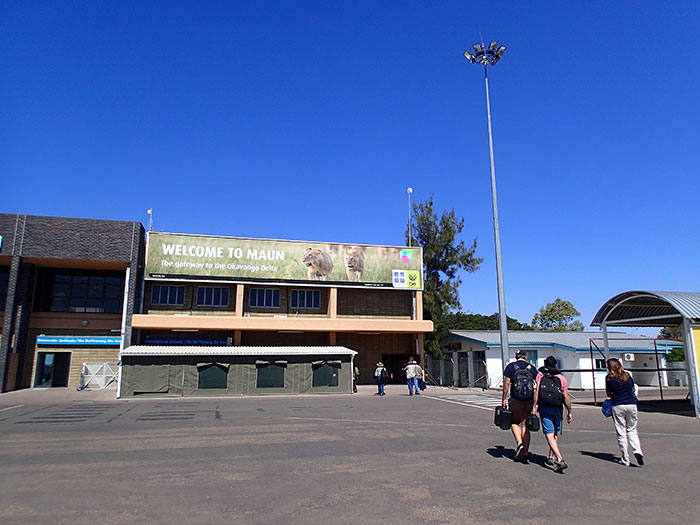
Welcome to Maun! Yes, thank you, pleased to be here!
Here are some impressions from the 11-day/10-night long safari trip from Maun to Kasane. It sure was an excellent safari, so all honor to Safari Lifestyles who sold me the trip, and to Okavango Expeditions who operated the safari.
All in all, we saw 42 lions, 22 African wild dogs, 6 leopards, 3 cheetahs and numerous hyenas. And we were lucky and saw rare animals like the caracal and the Mozambique spitting cobra. Of the more common animals, we got to see most of the species normally encountered on trips in Northern Botswana (animal checklist). For birding the trip was more ordinary, partly because there are less species in the region during the cold winter period. In total, I saw more than 150 species of birds (bird checklist).
As for photography, a mobile safari is great because the companies use open cars. I brought a monopod as support for my Nikon 80-400mm VR lens. This worked OK in the open car. Under daylight conditions, this lens is a perfect match for animals, but it under-performs at dusk and dawn. The lens is however too short for birds, so on my next safari I will probably bring a longer zoom lens. A weakness with the Nikon 80-400mm VR is that it is prone to absorb dust, a very relevant issue in Botswana. This also happened to my copy, something a lens this expensive should not do.
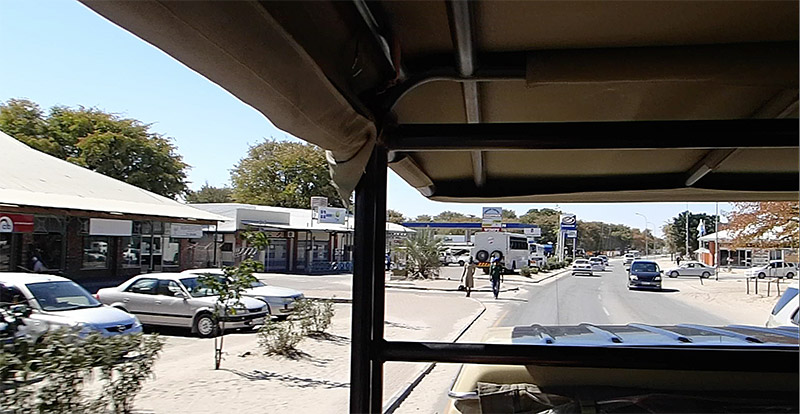
Maun
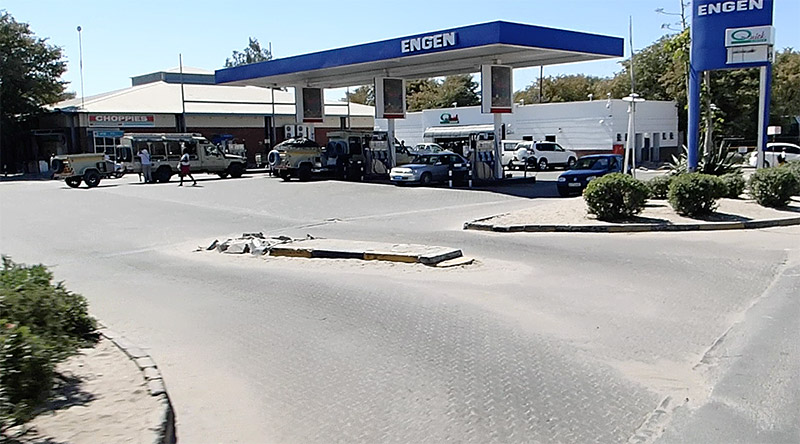
Maun gas station
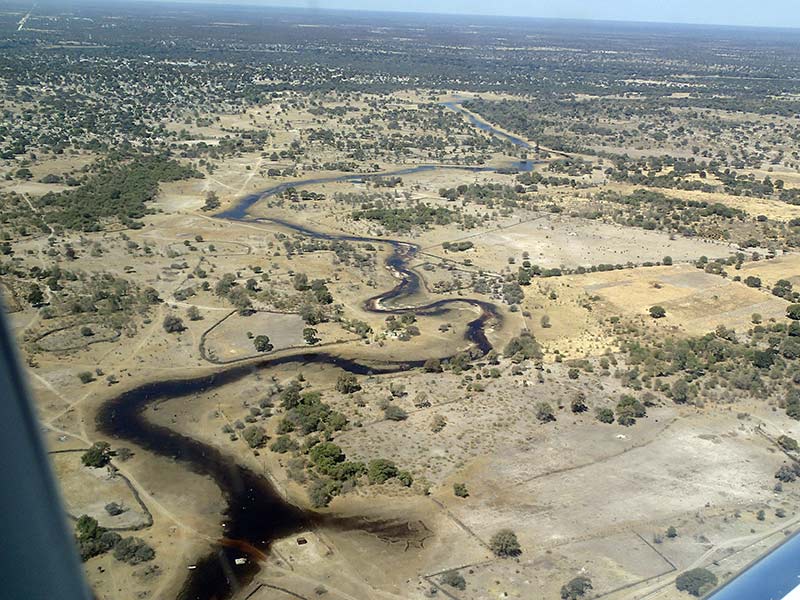
Maun area
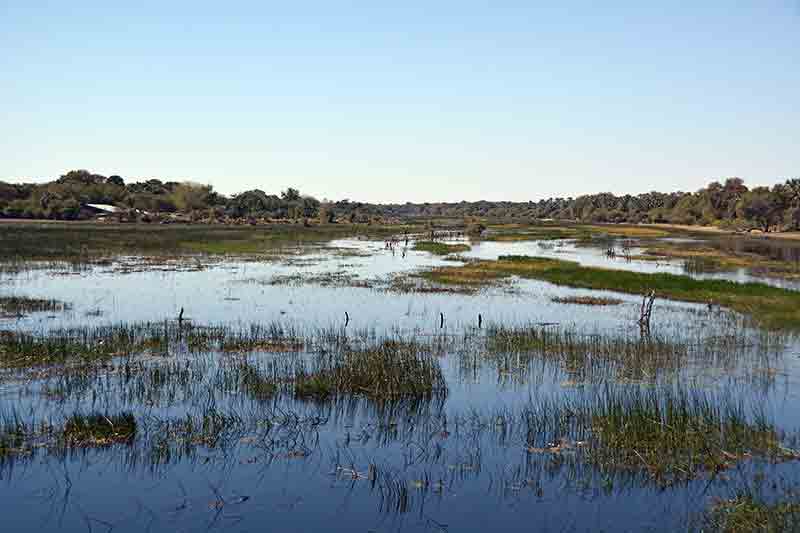
Thamalakane River, Maun
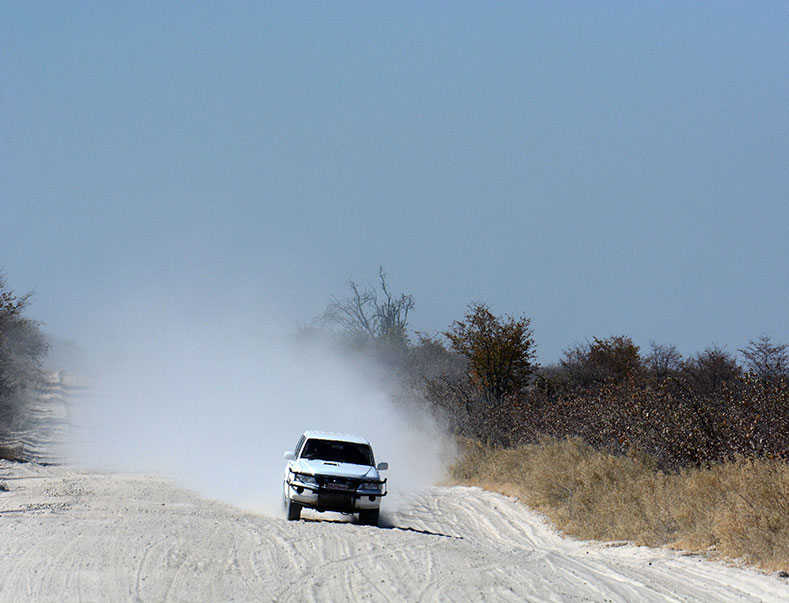
Dusty roads north of Maun
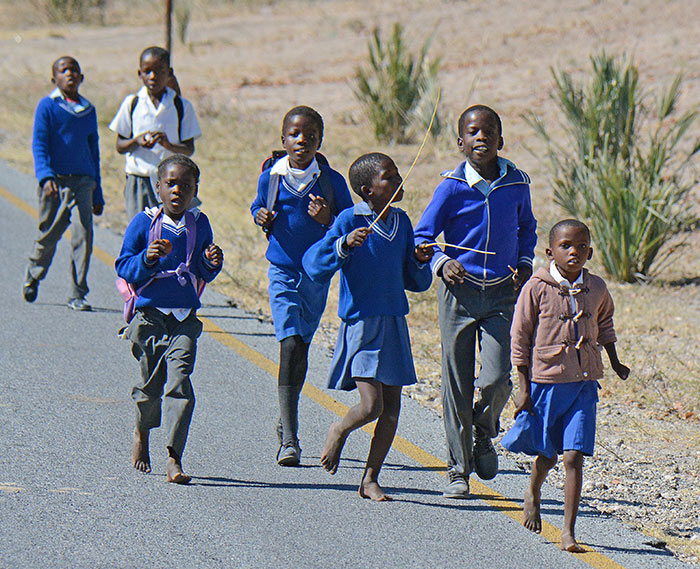
School kids in Maun
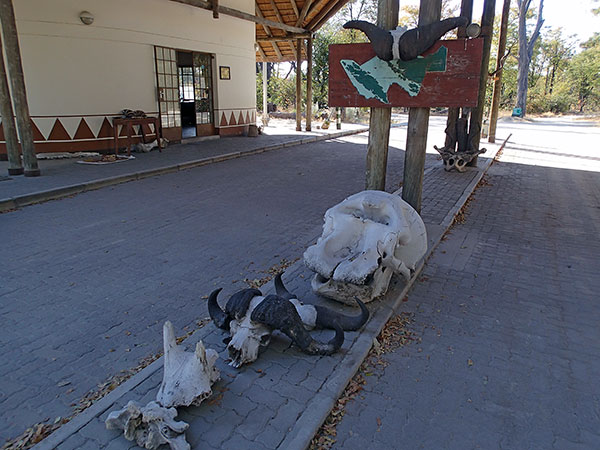
Moremi Game Reserve entrance
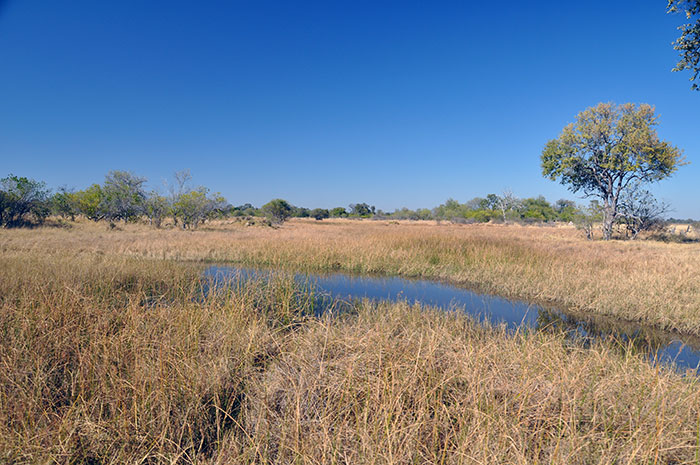
Okavango Delta habitat
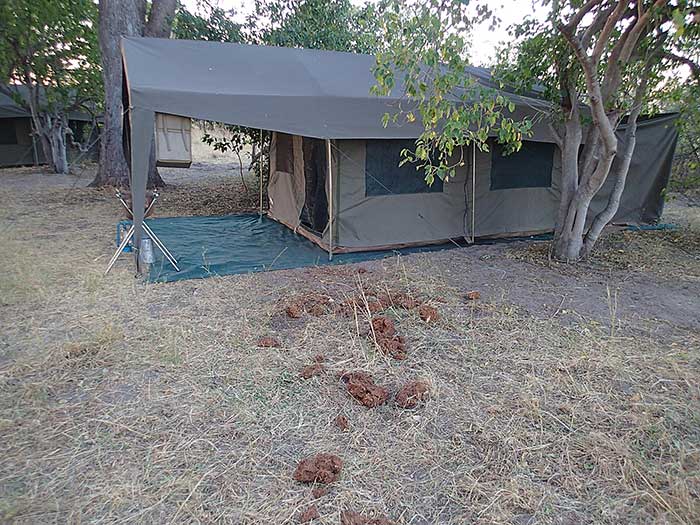
Safari tent
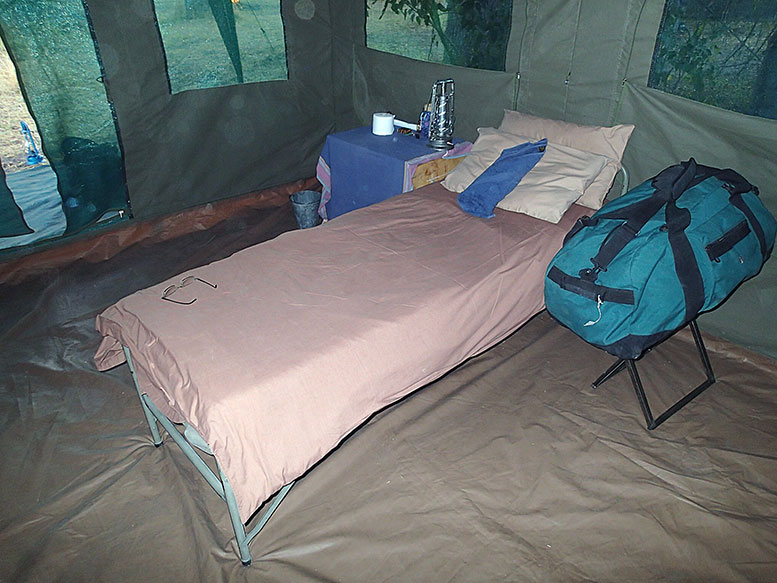
A good mattress, and comfortable conditions

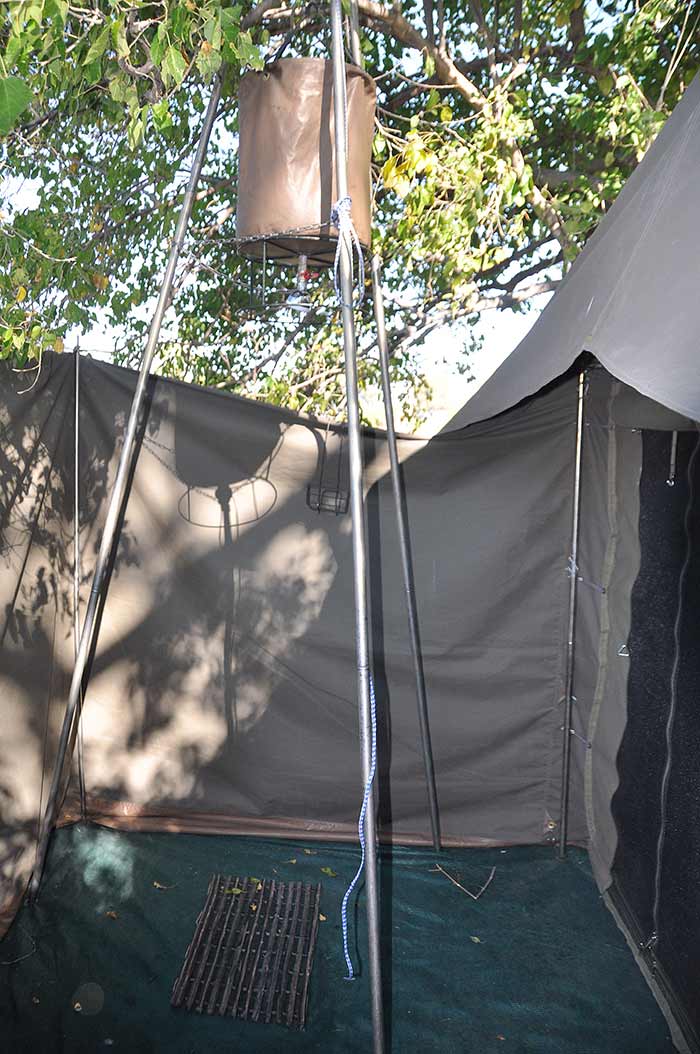
Even a private loo and a shower. The hyenas came to camp after dark. One evening I heard something behind the tent, and went to the "bathroom" and turned on the flash. A hyena was standing just a few meter from me. Surprisingly, it ignored the light and me, and walked past the tent. Glad it was not a lion, as they also sometimes turn up in camp
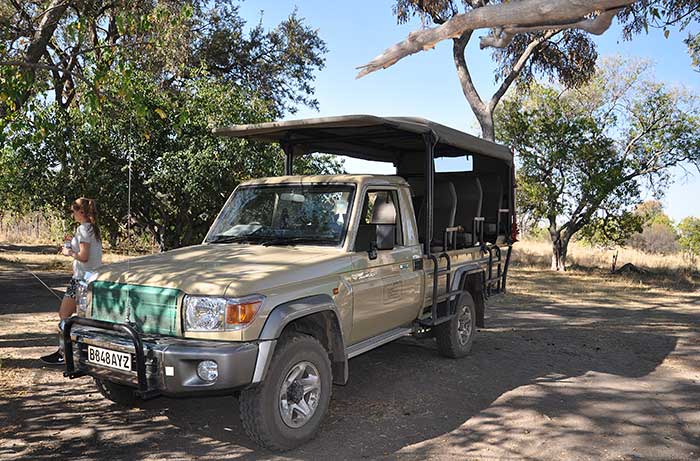
Toyota Landcruiser, a great safari vehicle
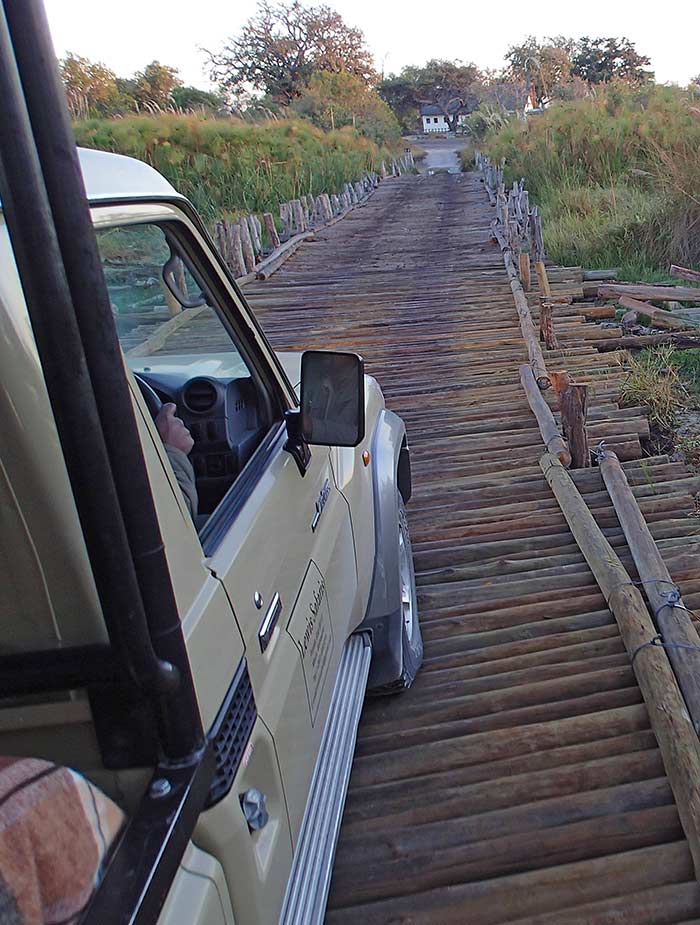
Third Bridge in Moremi looked newly re-built
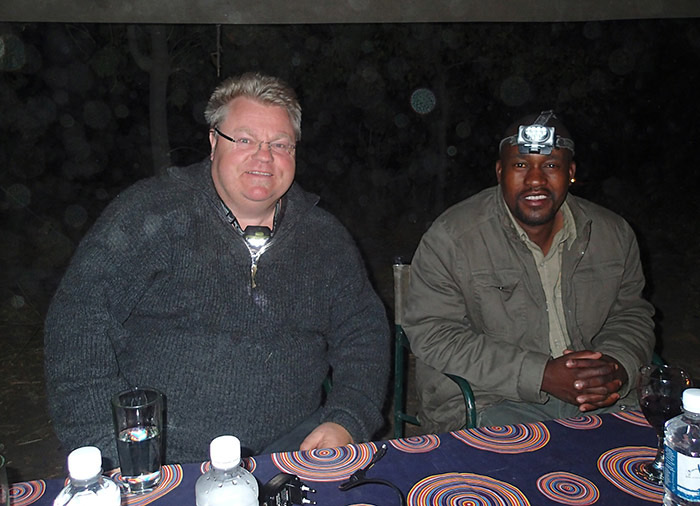
At dinner in Moremi with the excellent guide

The support truck, used to transport the gear and the 3 crew between the locations
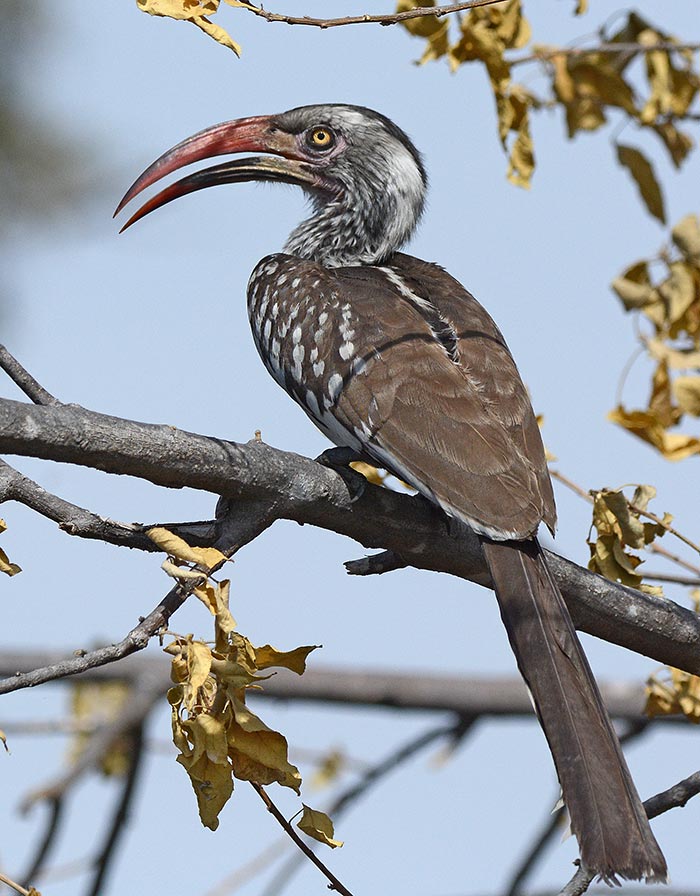
Southern Red-Billed Hornbill, one of the most common bird species in the region
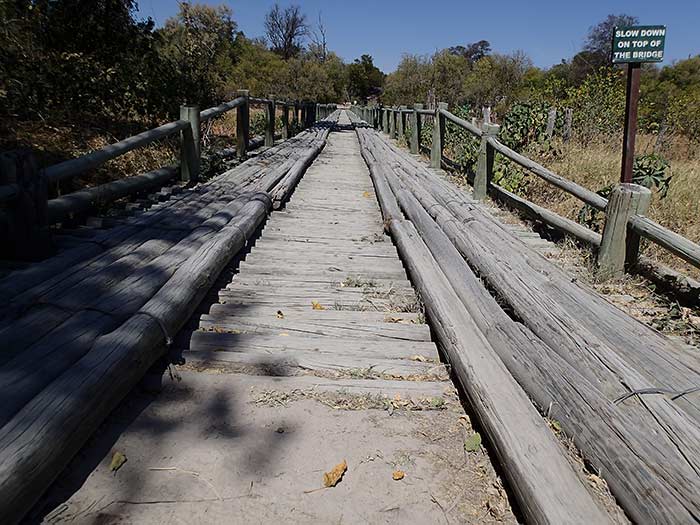
Khwai River Bridge was also new. The old one we crossed in 2004 was completely disintegrated next to it. This one looked much more sturdy
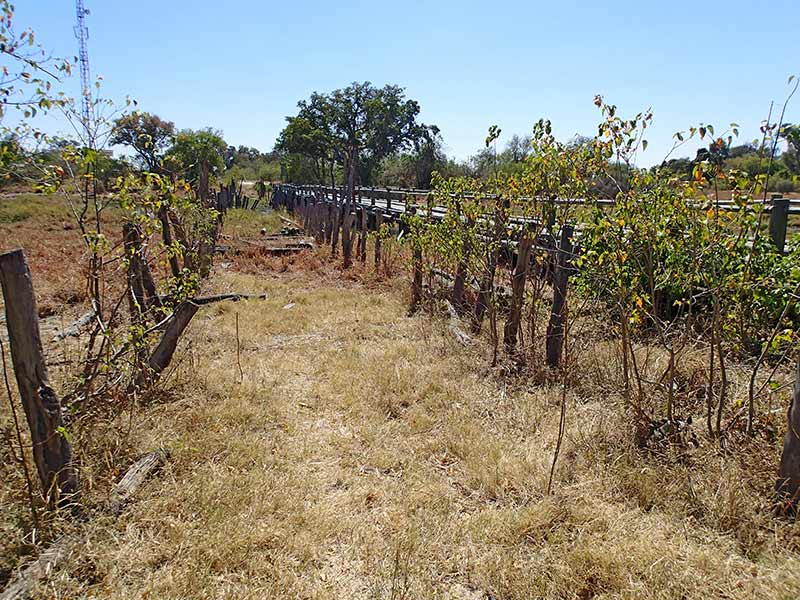
The old Khwai Bridge
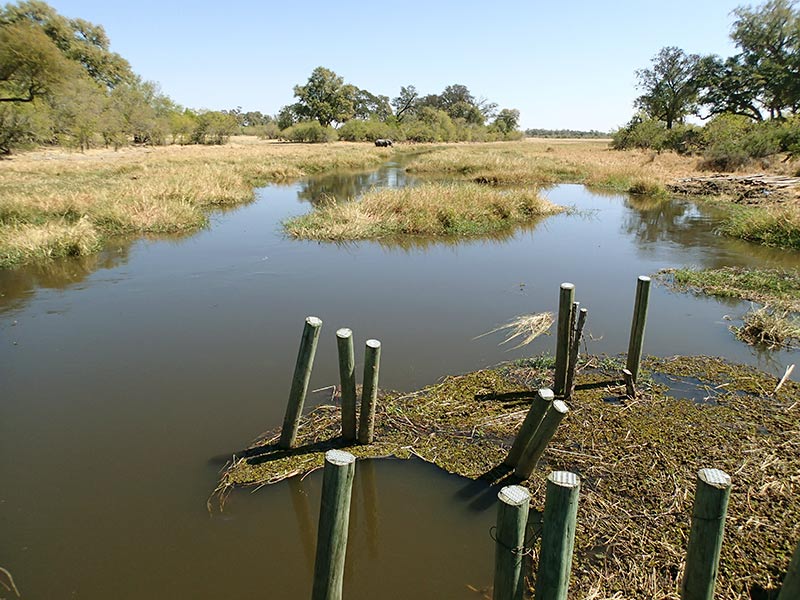
Khwai River
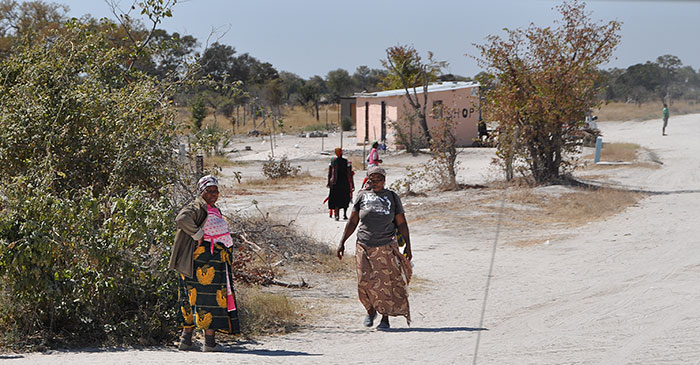
Khwai village
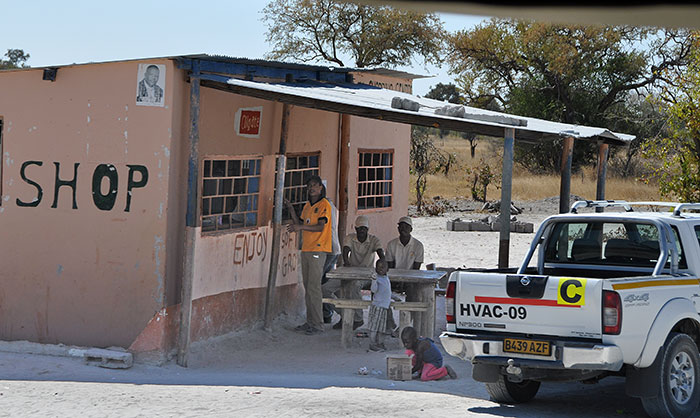
Khwai village shop
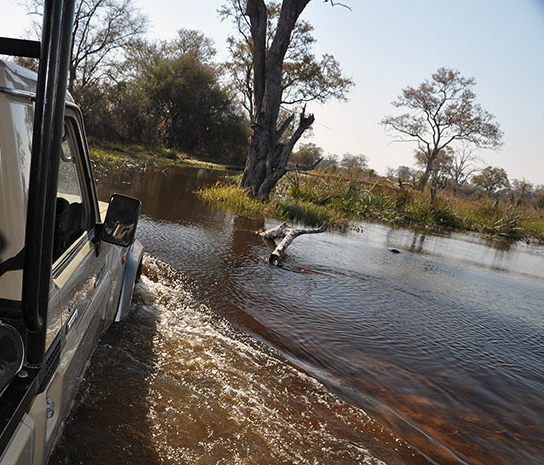
A lot of river crossings in the Khwai area. The safari Toyota Landcruiser could easily take 1 meter depth
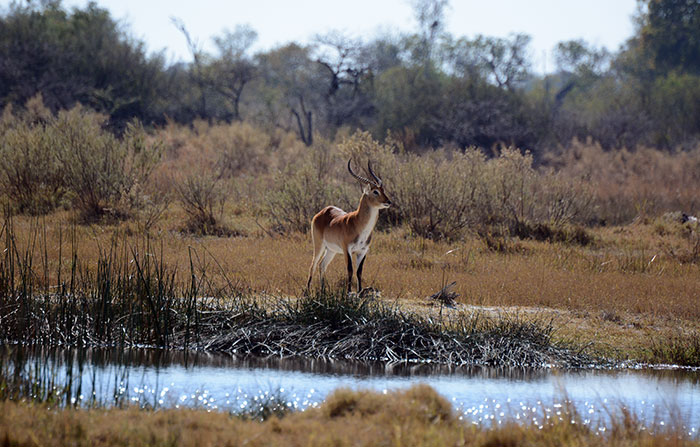
A Red Lechwe ram in the Khwai Community Area
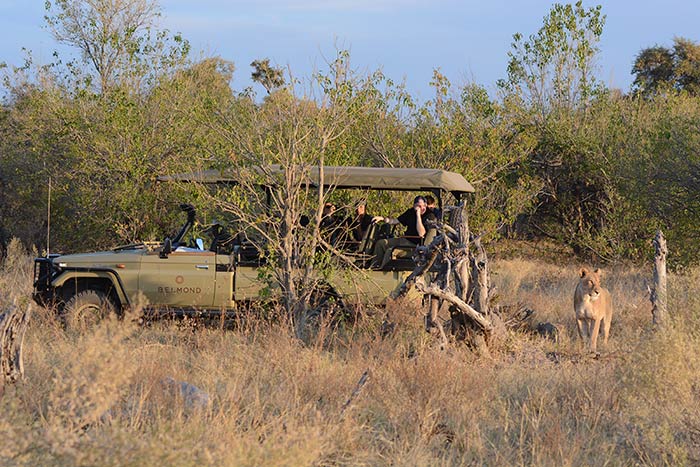
To a large degree, most animals ignore the cars, but the birds are often more weary
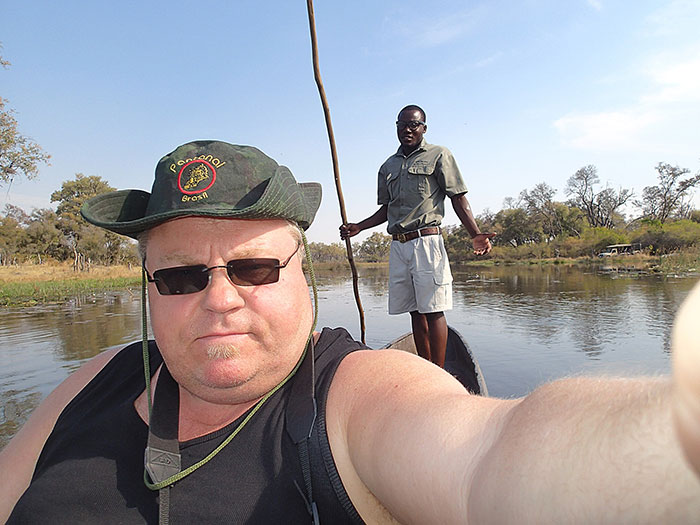
Mokoro trip on a tributary of the Khwai River. The poler pretends he is annoyed being taken photo of. Which is of course bollocks, given they are guiding western people every day
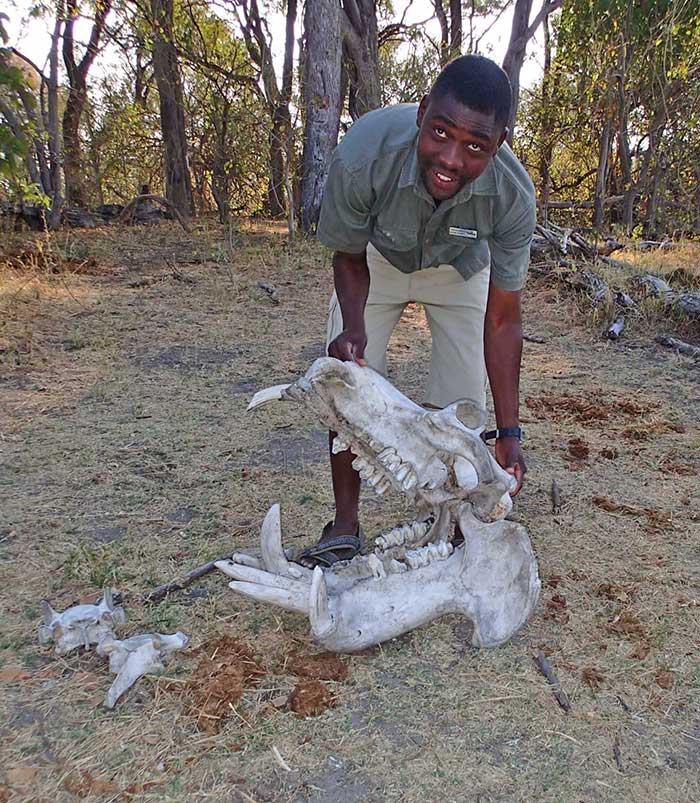
Hippo skull
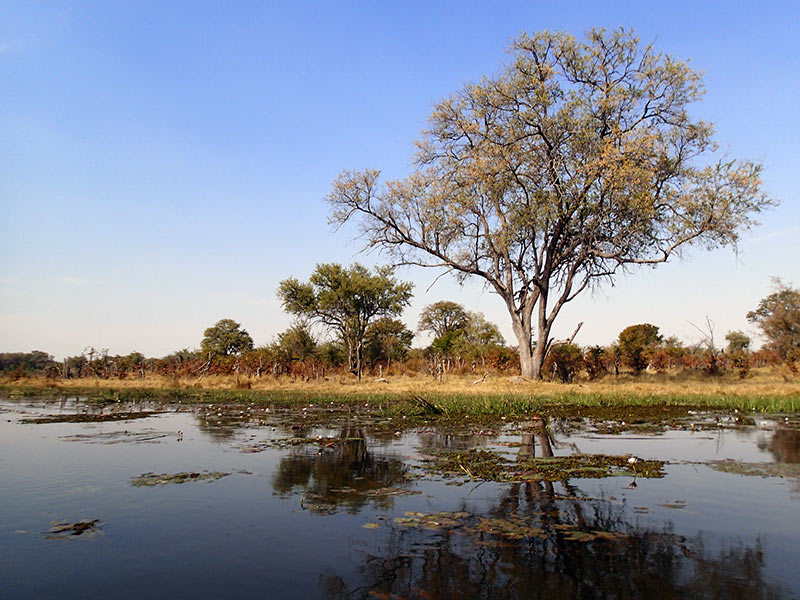
River landscape
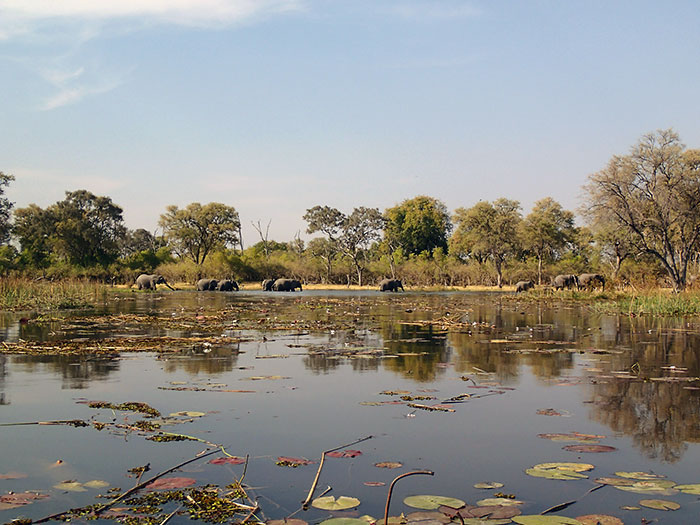
Elephant heard crossing the river
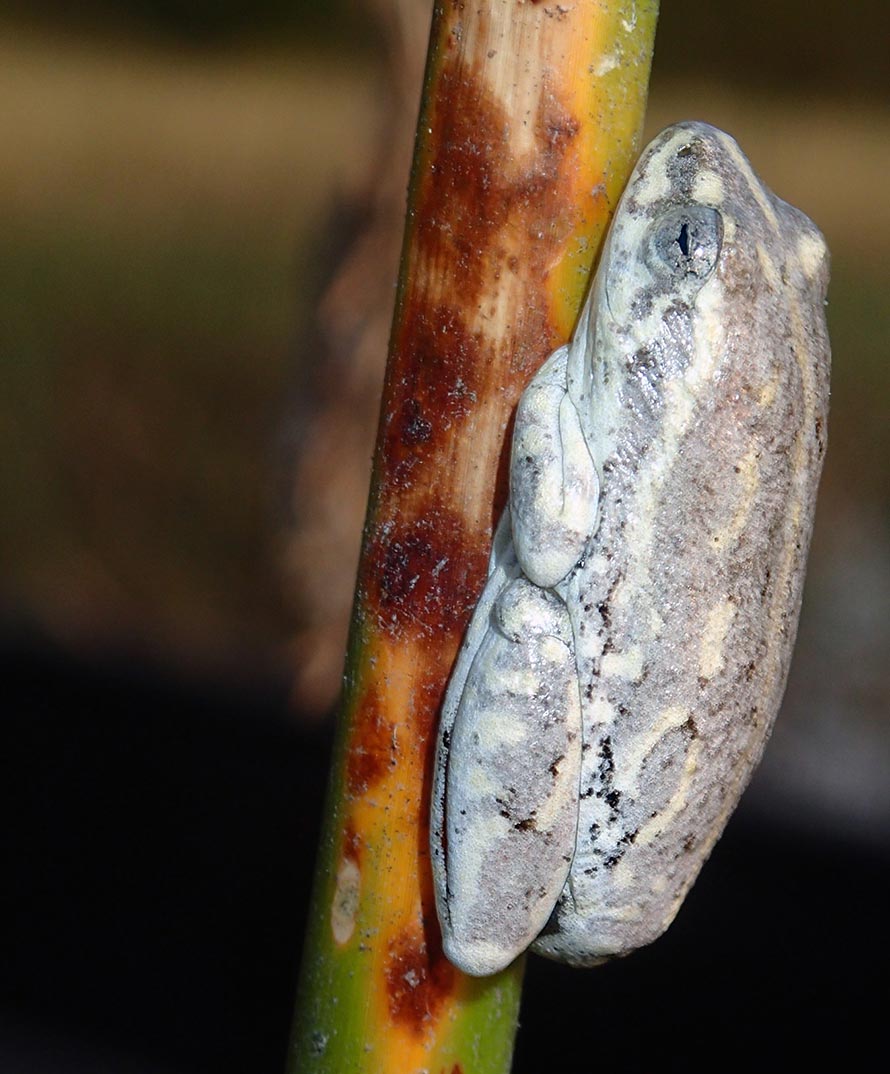
Angolan Reed Frog (Hyperolius parallelus), according to the guide
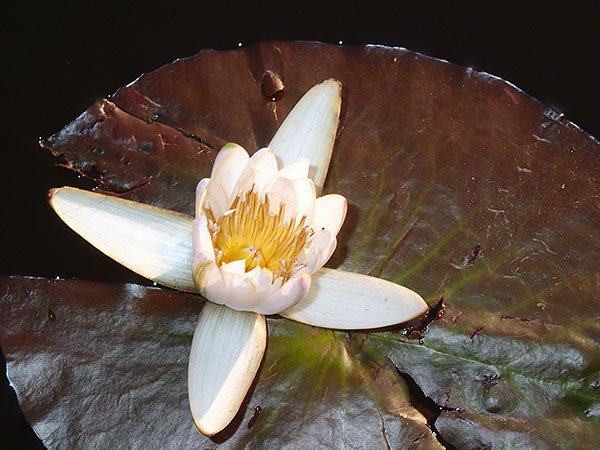
Water lily
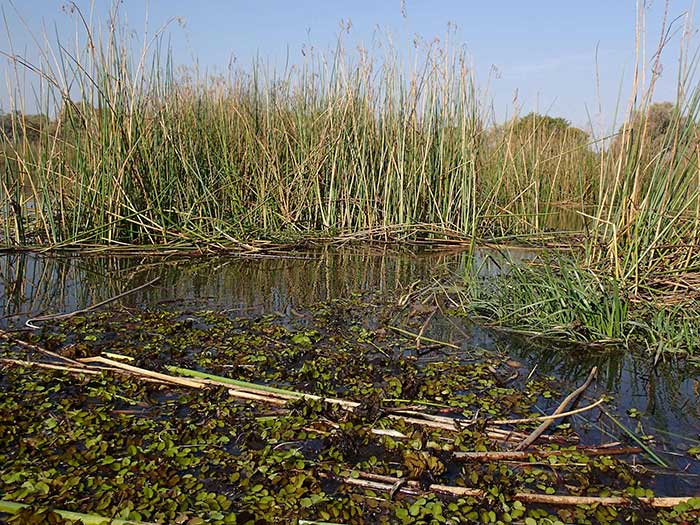
Kariba Weed (Salvinia molesta), is an invasive aquatic plant species native to Brazil, now wide-spread in the Okavango Delta
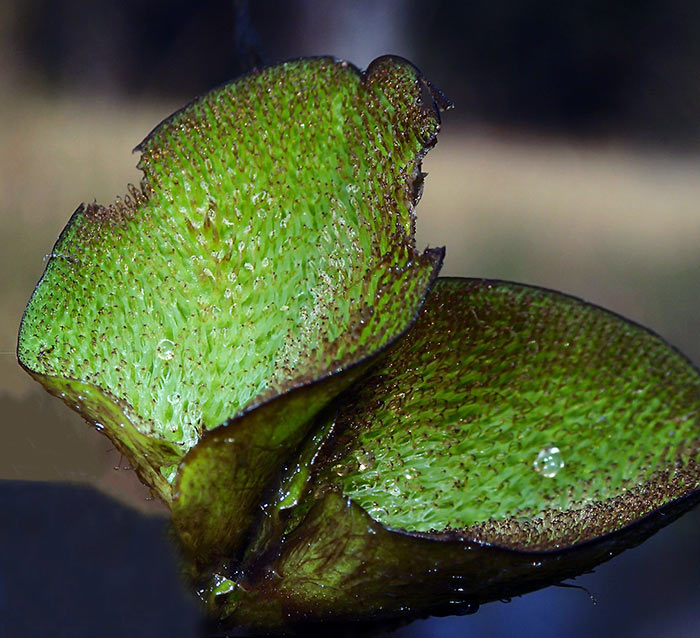
Kariba Weed
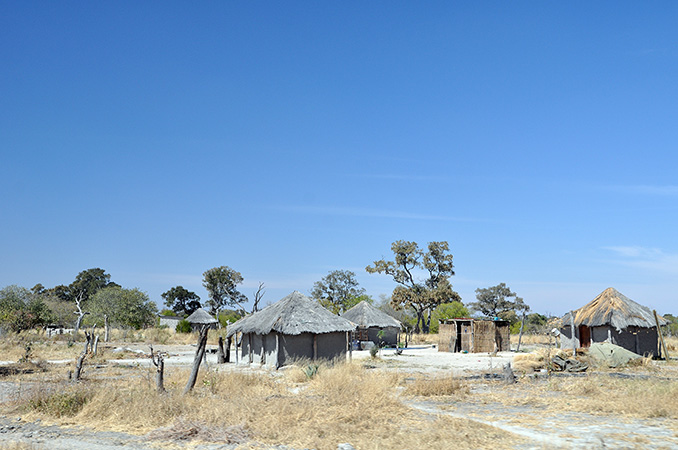
Khwai village huts

Morning coffee break in Khwai
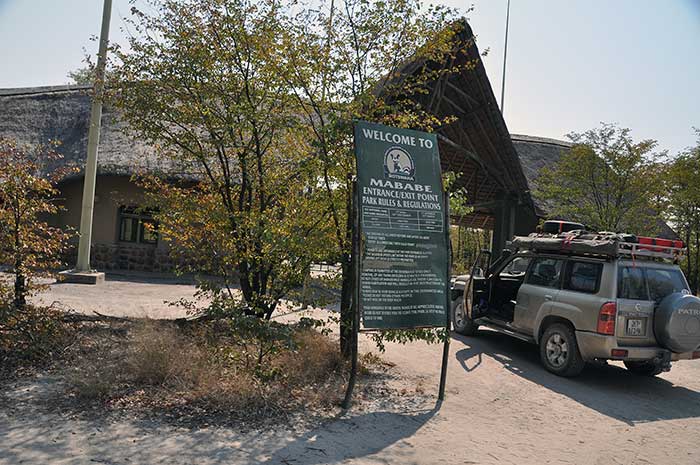
Mababe entrance to Chobe National Park
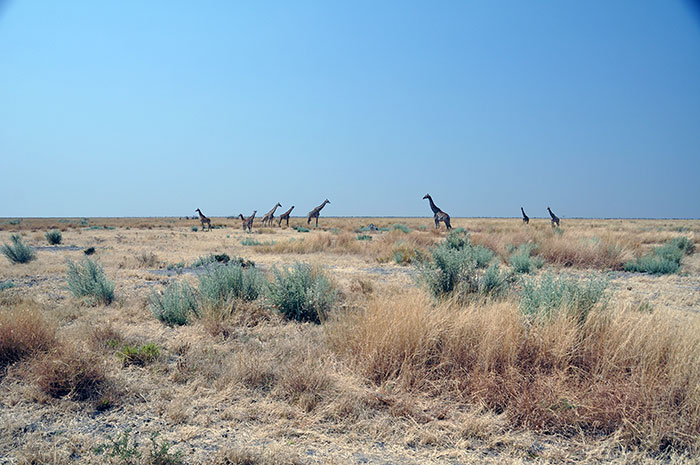
Towards Savuti and open landscape
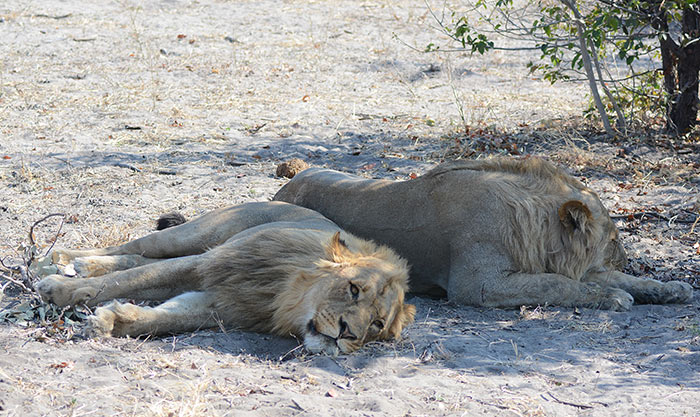
On safaris you most often find the big cats sleeping during the day. On this particular safari most of the big cats we came across were active. Except these, of course, who are enjoying a nap!
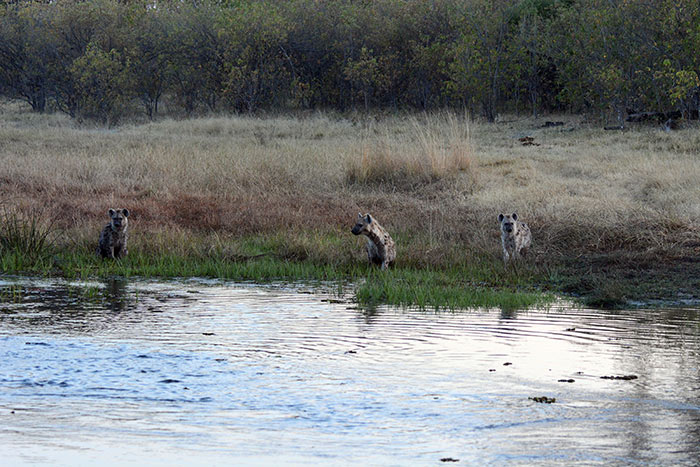
Hyenas in the early morning before sunrise
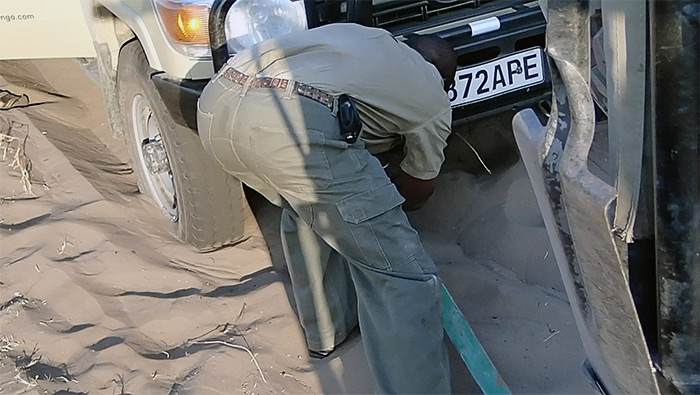
Our guide helps towing another car stuck in the sand
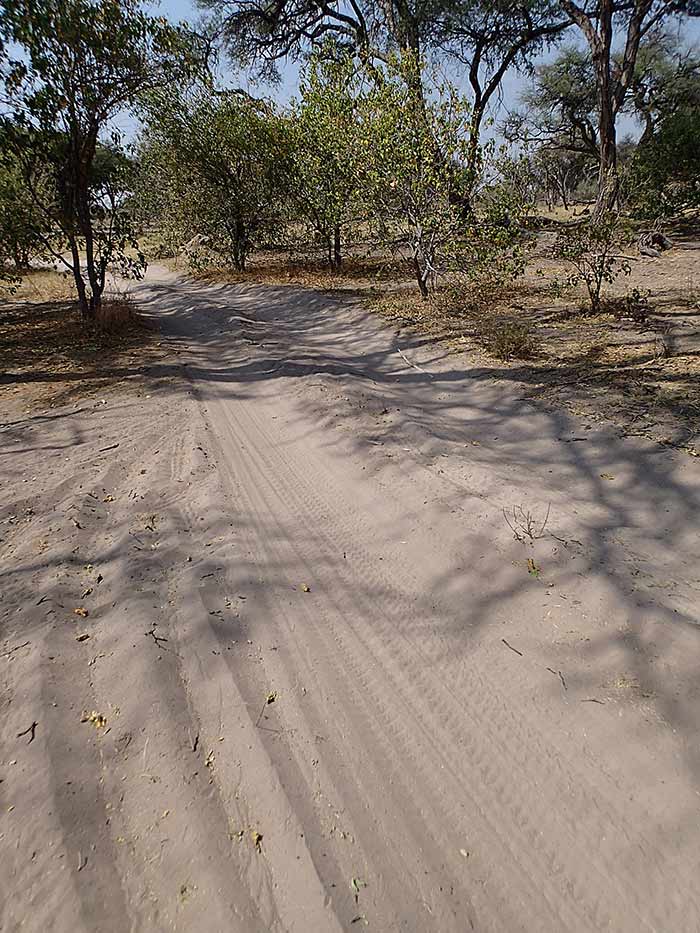
Sandy roads in Savute
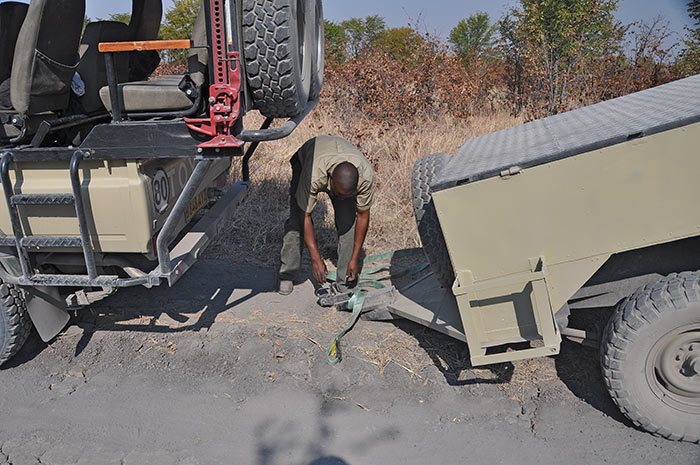
The hanger comes off, first time. The trailer hitch broke clean off from the back of the Landcruiser
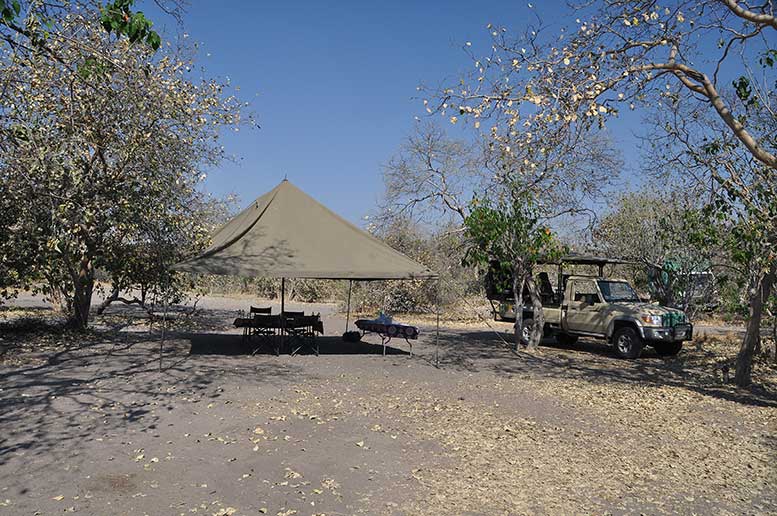
Camp-site in Savuti
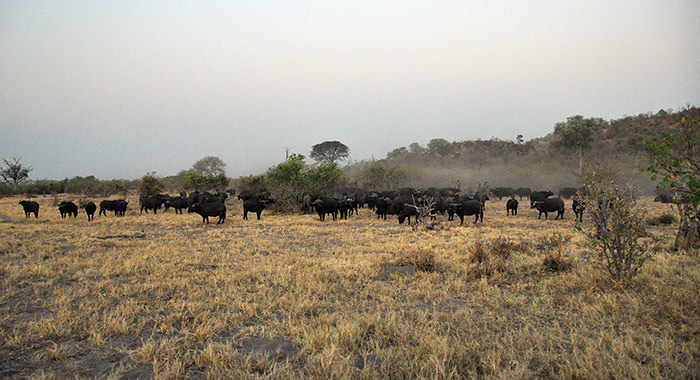
Buffalo heard in Savuti
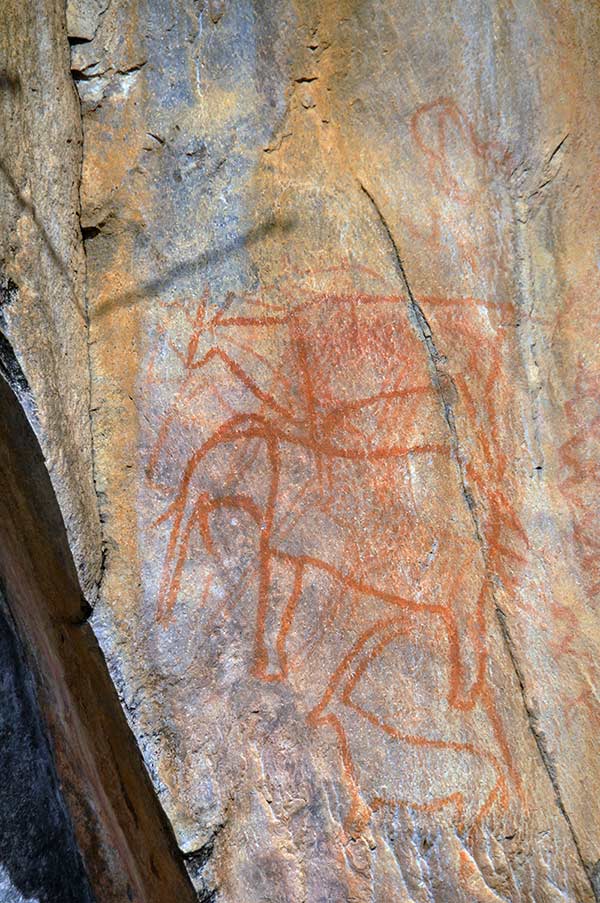
Old San people (Bushmen) rock art painting in Tsonxhwaa Hill, Savuti
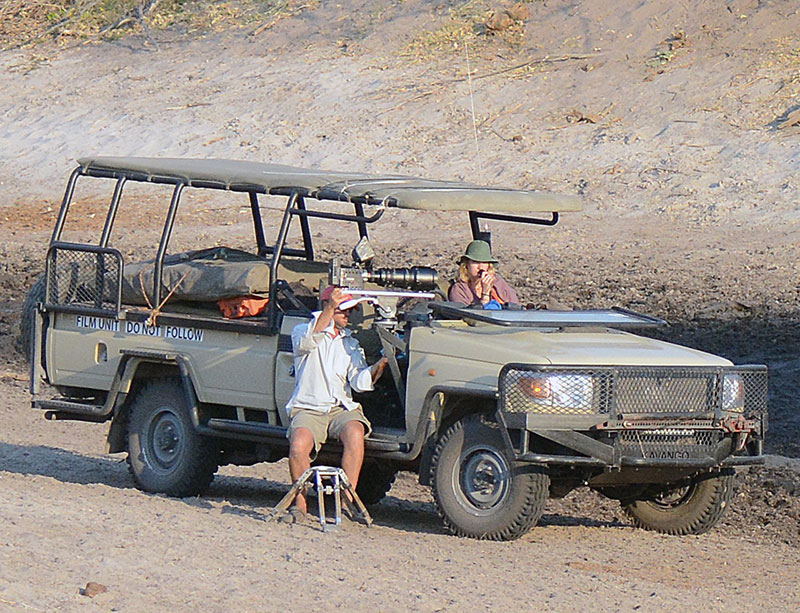
Filmmakers. Savute is probably one of the last wildlife areas in Africa where they can work relatively undistribed by tourists
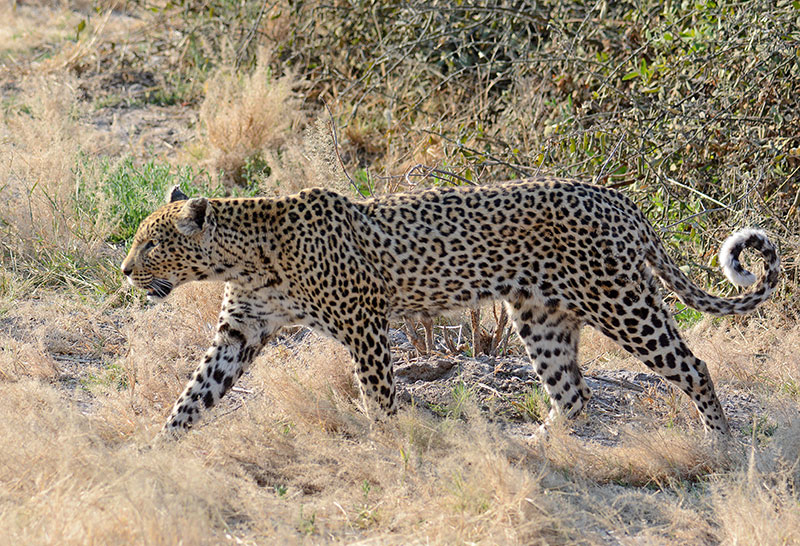
This old female leopard was (most likely) named Torn Ear by the filmmakers of "Savage Kingdom". We saw the filmmakers several times, who spent 2 years in Savute making the epic "Savage Kingdom" series for Nat Geo Wild
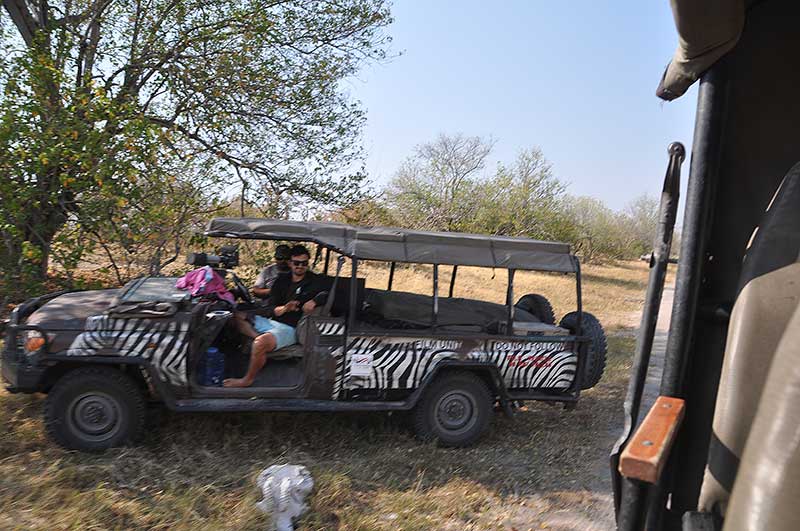
Filmmakers (probably Brad Bestelink) shooting "Savage Kingdom" in 2015
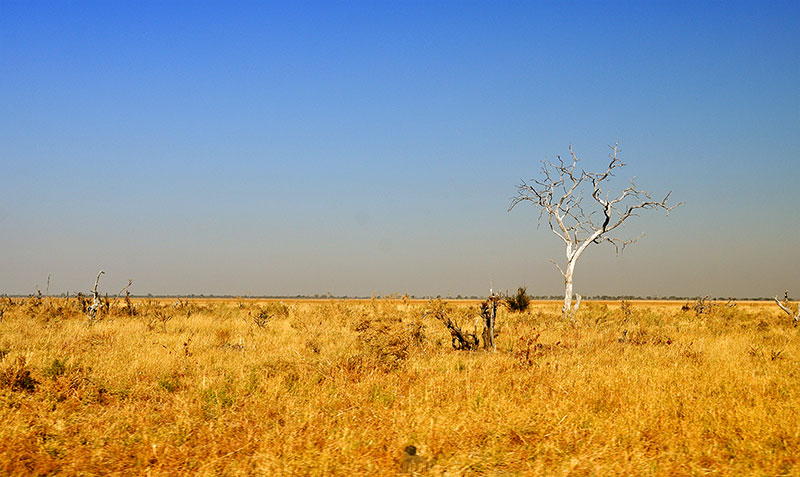
Savuti Marsh
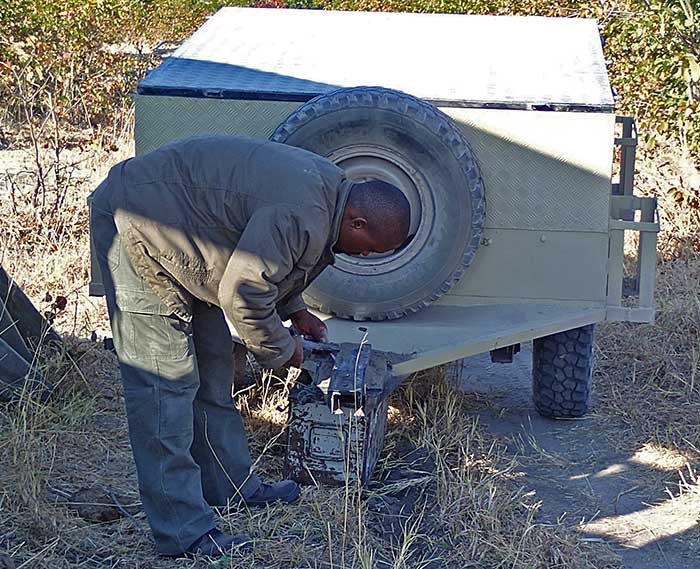
Oh no, the hanger comes off again .. We lost the hanger three times, and finally left it behind at the Savuti Northern Gate for the guide to pick it up on the return trip. The guide was an expert mechanic. I guess you have to be, because something always break on these rough roads and under these challenging conditions

Kids
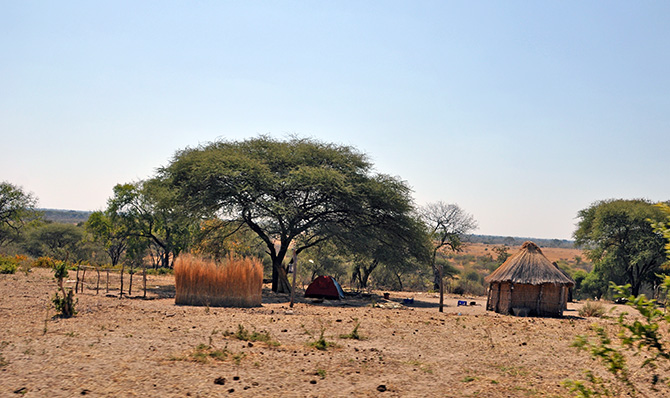
Cattle farm
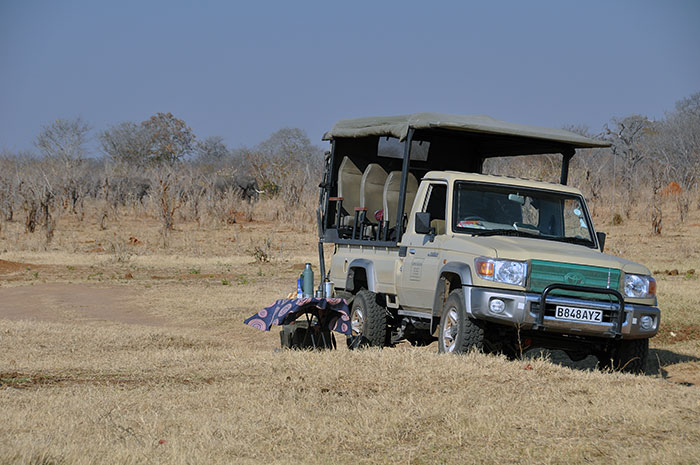
Coffee break with Elephants, Chobe National Park
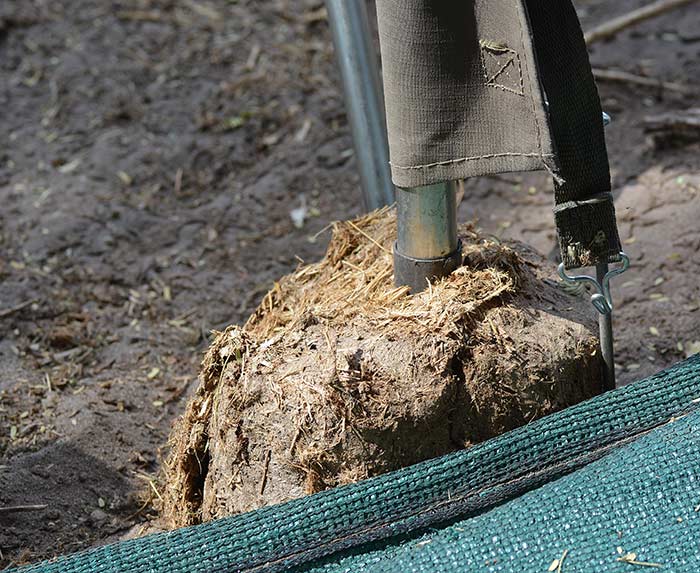
You take what you have. No rocks in Chobe, only sand and elephant dung. Here used as support for the tent
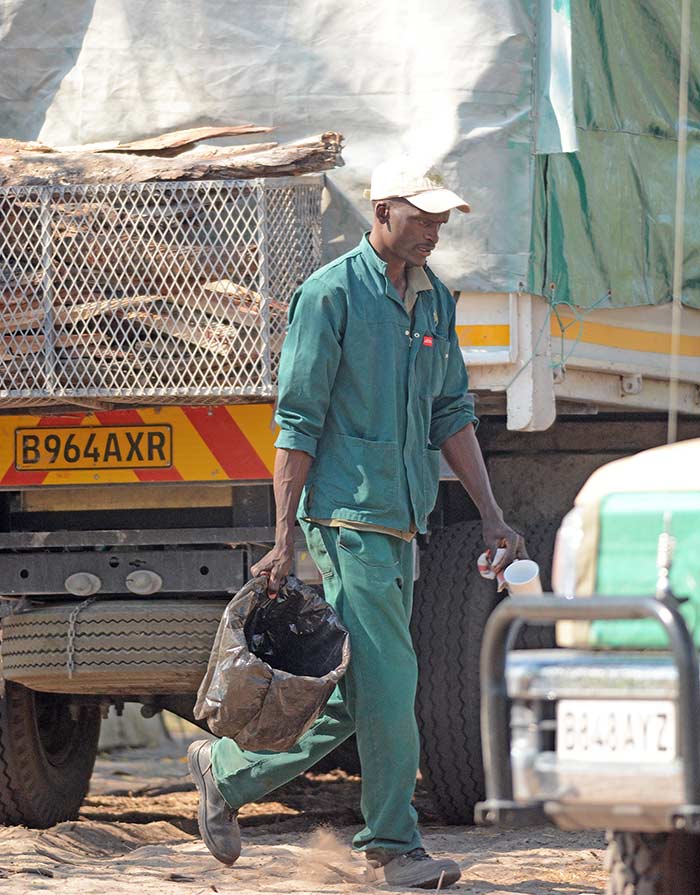
Safari company crew
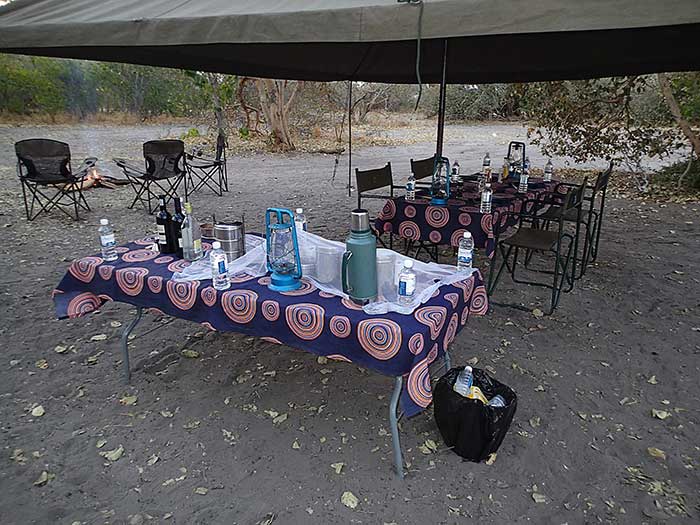
No complains about the standard. This is the dining area
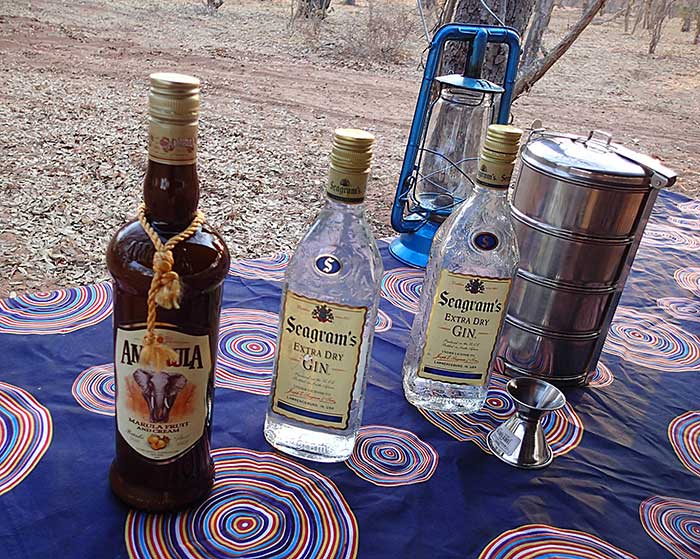
G & T was included. No ice cubes though .. Had a couple of these after dinner most evenings. Said to help against malaria
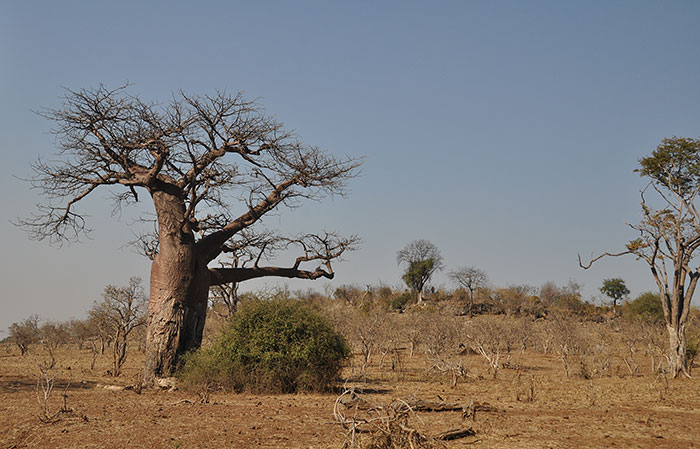
Baobab tree in Chobe NP
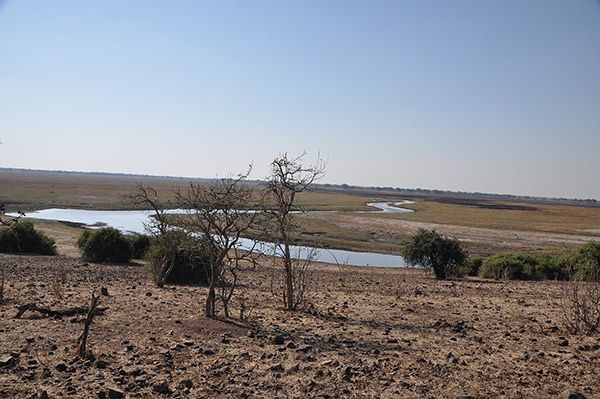
Chobe River. Across the river is Namibia
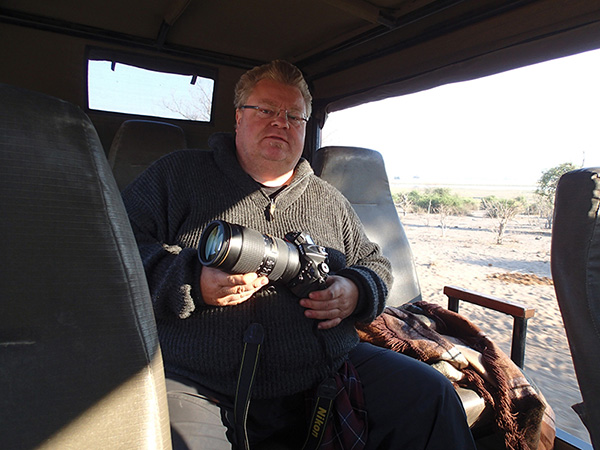
Alone in the middle row, good for photography
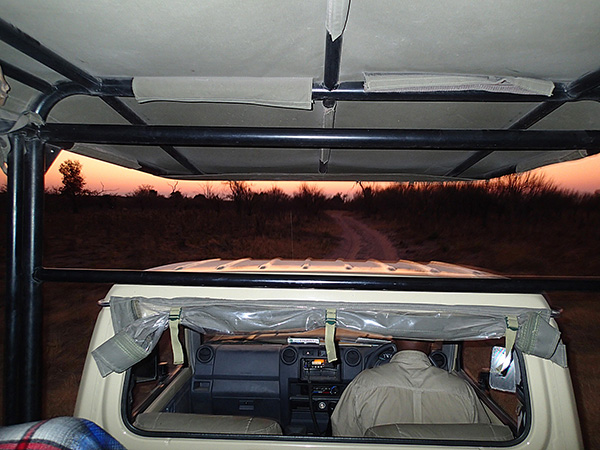
Evening drive. View from the back seat
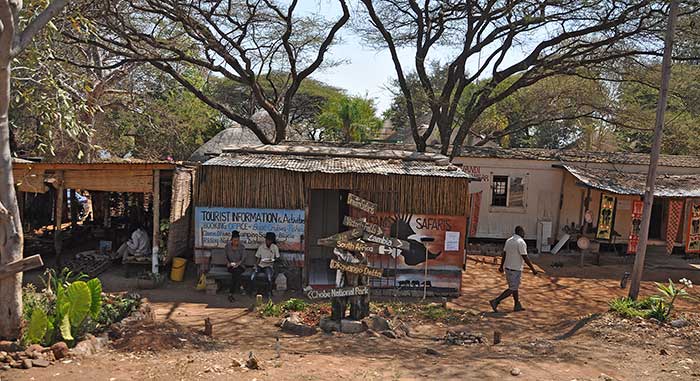
Kasane
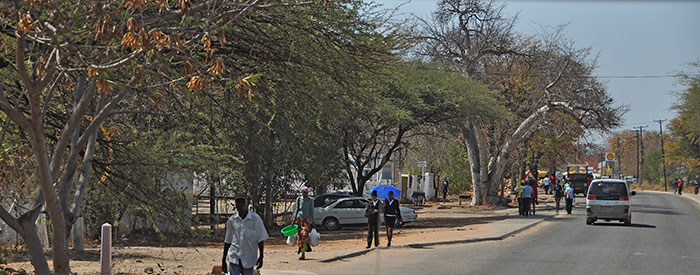
Kasane street
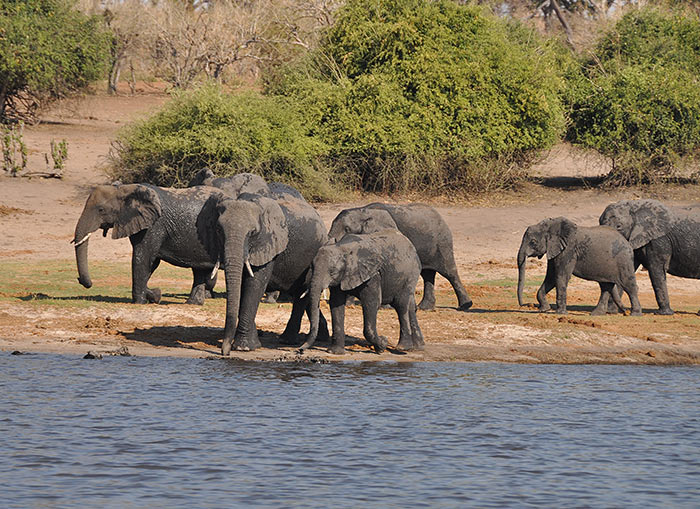
Chobe River Elephants
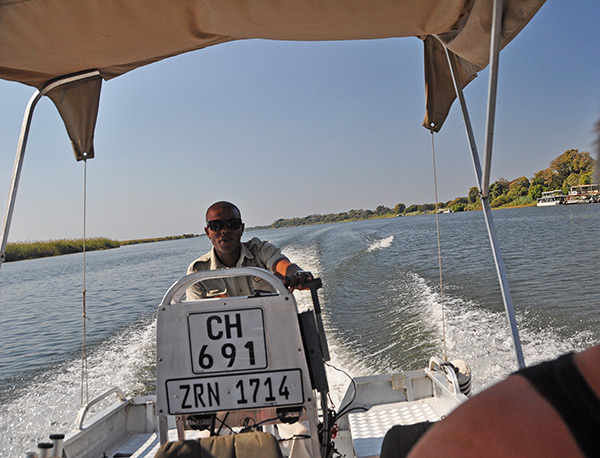
On the Chobe River
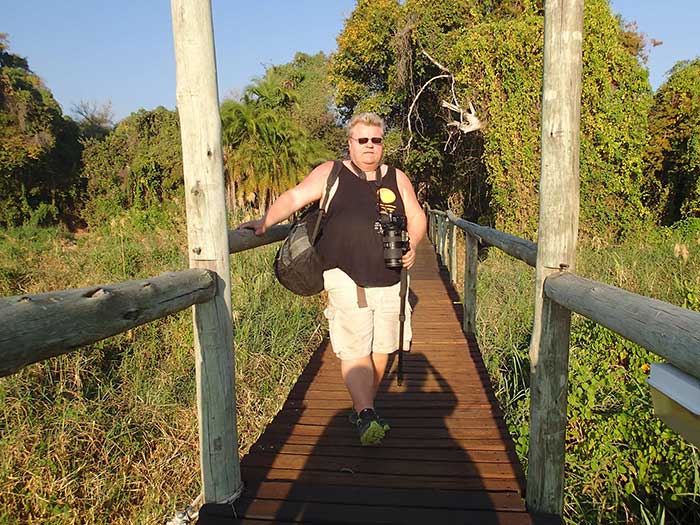
After the boat trip on Chobe River

With the bird checklist the last night in Chobe NP